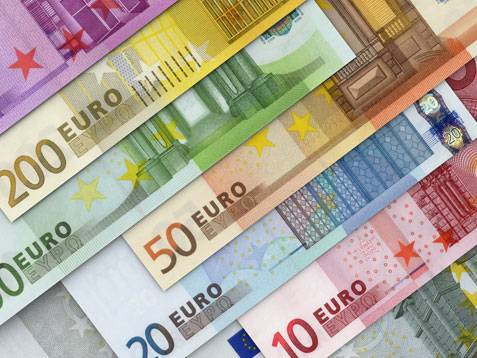The euro declined in European markets on Thursday against a basket of global currencies, extending losses for the second consecutive session against the US dollar. The euro moved further away from its highest level in four years, pressured by continued profit-taking and corrective movement.
The US dollar continued to recover from its lowest levels in more than three years, supported by bargain hunting and ahead of the June jobs report due later today, before the Independence Day holiday in the United States.
This week’s key inflation data from Europe has increased uncertainty surrounding a possible interest rate cut by the European Central Bank in July, as investors await more economic indicators from the eurozone.
Price Outlook
The euro fell against the dollar by 0.1% to $1.1786, down from the day’s opening price of $1.1798, after reaching a high of $1.1810.
The euro closed Wednesday down 0.1% against the dollar, marking its first daily loss in ten sessions, as traders booked profits from the four-year high of $1.1830.
The US Dollar
The US Dollar Index rose by 0.15% on Thursday, extending gains for a second straight session, as the greenback continued to rebound from its three-year low of 96.38. The move reflected ongoing strength in the dollar against major and minor currencies.
In addition to bargain buying, the dollar was buoyed by optimism following a new trade agreement between the United States and Vietnam, which renewed hopes for more deals ahead of the July 9 tariff deadline.
President Donald Trump announced Wednesday that Vietnam had signed a trade agreement with the US, and suggested that other nations might follow suit.
Despite limited details, Trump stated that Vietnamese goods would face a 20% tariff, while goods transshipped through Vietnam from third countries would be subject to a 40% tariff.
Chinana from Saxo Bank noted that all eyes are now on China’s response, as the move directly targets transshipped goods with a higher tariff. He added that this is a clear sign of global supply chains being restructured and warned of potential further disruptions ahead.
US Jobs
Global financial markets are closely watching the US Labor Department’s June employment report, scheduled for release on Thursday ahead of the July 4th holiday.
Data released on Wednesday showed that US companies shed jobs in June for the first time since January 2022, prompting traders to adjust expectations for the timing of a potential Fed rate cut.
According to CME Group’s FedWatch tool, the probability of a 25-basis-point rate cut at the July meeting rose from 20% to 25%, while the likelihood of holding rates steady declined from 80% to 75%.
European Interest Rates
The overall Consumer Price Index in Europe rose by 2.0% year-on-year in June, matching market expectations, after a 1.9% increase in May.
According to Reuters sources, a clear majority at the latest European Central Bank meeting favored keeping rates unchanged in July, with some members calling for a longer pause.
Money markets currently price in a 30% chance of a 25-basis-point rate cut by the ECB in July.


